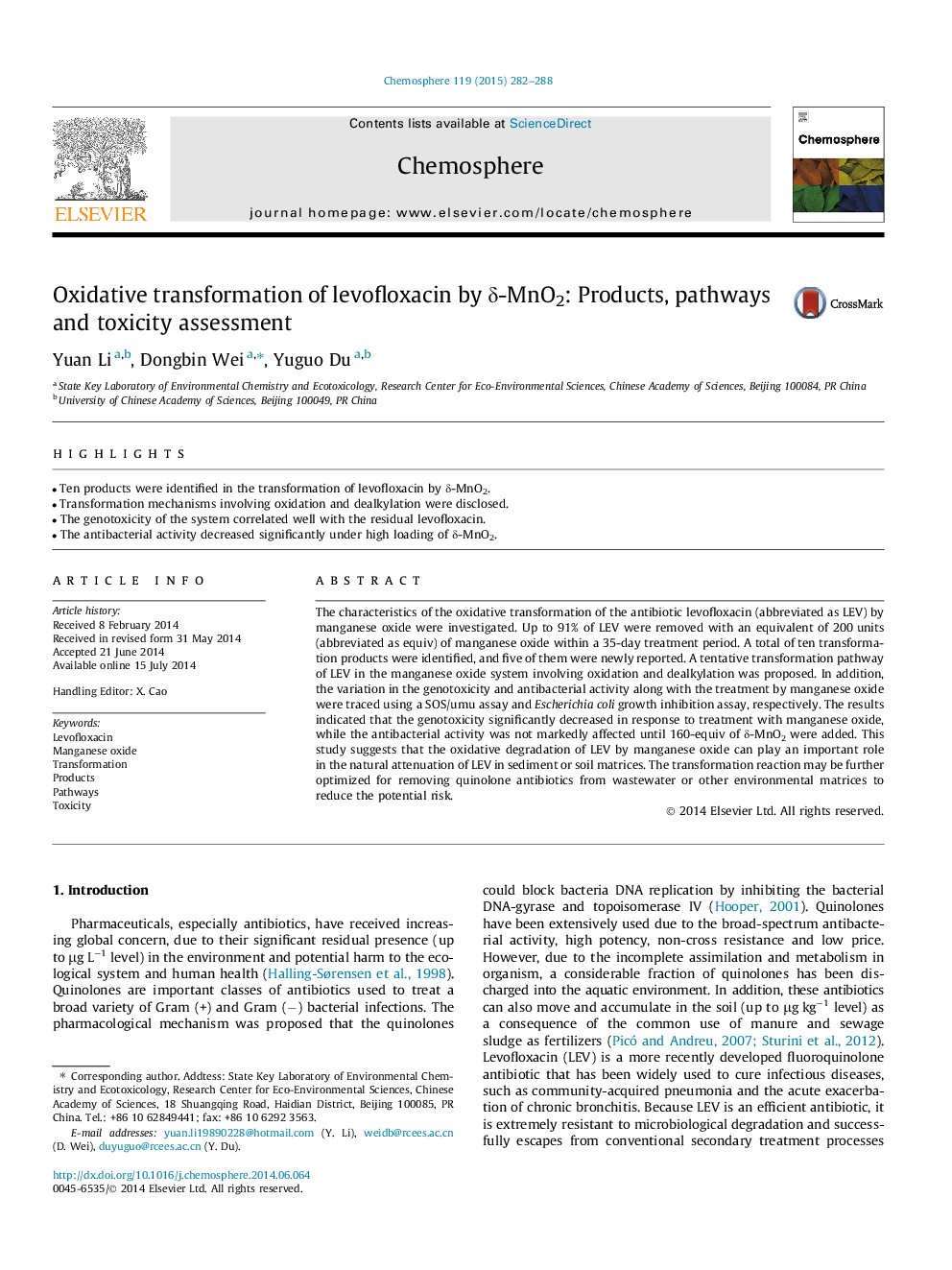| Article ID | Journal | Published Year | Pages | File Type |
|---|---|---|---|---|
| 4408631 | Chemosphere | 2015 | 7 Pages |
•Ten products were identified in the transformation of levofloxacin by δ-MnO2.•Transformation mechanisms involving oxidation and dealkylation were disclosed.•The genotoxicity of the system correlated well with the residual levofloxacin.•The antibacterial activity decreased significantly under high loading of δ-MnO2.
The characteristics of the oxidative transformation of the antibiotic levofloxacin (abbreviated as LEV) by manganese oxide were investigated. Up to 91% of LEV were removed with an equivalent of 200 units (abbreviated as equiv) of manganese oxide within a 35-day treatment period. A total of ten transformation products were identified, and five of them were newly reported. A tentative transformation pathway of LEV in the manganese oxide system involving oxidation and dealkylation was proposed. In addition, the variation in the genotoxicity and antibacterial activity along with the treatment by manganese oxide were traced using a SOS/umu assay and Escherichia coli growth inhibition assay, respectively. The results indicated that the genotoxicity significantly decreased in response to treatment with manganese oxide, while the antibacterial activity was not markedly affected until 160-equiv of δ-MnO2 were added. This study suggests that the oxidative degradation of LEV by manganese oxide can play an important role in the natural attenuation of LEV in sediment or soil matrices. The transformation reaction may be further optimized for removing quinolone antibiotics from wastewater or other environmental matrices to reduce the potential risk.
